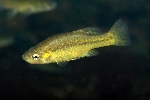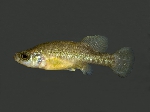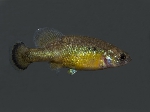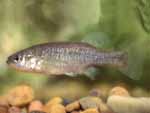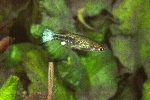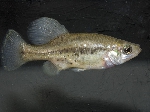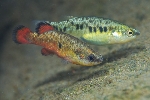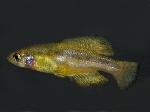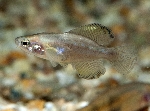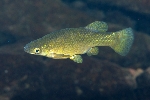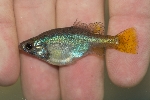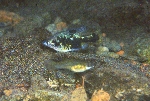Patterns of speciation in endemic Mexican Goodeid fish: sexual conflict or early radiation?
By Ritchie, M.G., S.A. Webb, J.A. Graves, A.E. Magurran, C. Macias Garcia
Journal of Evolutionary Biology, 18(4):922-929 17-May-2005. DOI: 10.1111/j.1420-9101.2005.00919.x
" Currently there is much interest in the potential for sexual selection or conflict to drive speciation. Theory proposes that speciation will be accelerated where sexual conflict is strong, particularly if females are ahead because mate choice will accentuate divergence by limiting gene flow. The Goodeinae are a monophyletic group of endemic Mexican fishes with an origin at least as old as the Miocene. Sexual selection is important in the Goodeinae and there is substantial interspecific variability in body morphology, which influences mate choice, allowing inference of the importance of female mate choice. We therefore used this group to test the relationship between sexual dimorphism and speciation rate. We quantified interspecific variation in sexual dimorphism amongst 25 species using a multivariate measure of total morphological differentiation between the sexes that accurately reflects sexual dimorphism driven by female mate choice and also used a mtDNA-based phylogeny to examine speciation rates. Comparative analyses failed to support a significant association between sexual dimorphism and speciation rate. In addition, variation in the time course of speciation throughout the whole clade was also examined using a similar tree containing 34 extant species. A constant rates model for the growth of this clade was rejected, but analyses instead indicated a decline in the rate of speciation over time. These results support the hypothesis of an early expansion of the group, perhaps due to an early radiation influenced by the key innovation of live bearing, or the prevalence of Miocene volcanism. In general, support for the role of sexual selection in generating patterns of speciation is proving equivocal and we argue that vicariance biogeography and adaptive radiations remain the most likely determinants of major patterns of diversification of continental organisms "
Classification: Evolution.
Language: English
Reference in bibliography for species (25)
Name substitutions
- Characodon lateralis referred to as Characodon audax, Characodon lateralis.
- Neotoca bilineata referred to as Skiffia bilineata.
Ritchie, M.G. & S.A. Webb, J.A. Graves, A.E. Magurran, C. Macias Garcia. 2005. "Patterns of speciation in endemic Mexican Goodeid fish: sexual conflict or early radiation?". Journal of Evolutionary Biology. 18(4):922-929. DOI: 10.1111/j.1420-9101.2005.00919.x (ffm01049) (abstract)

